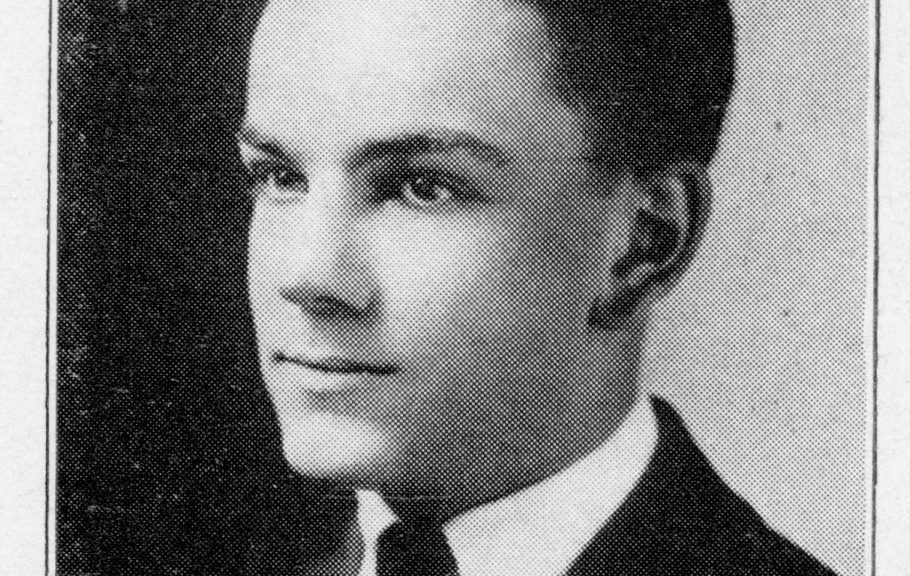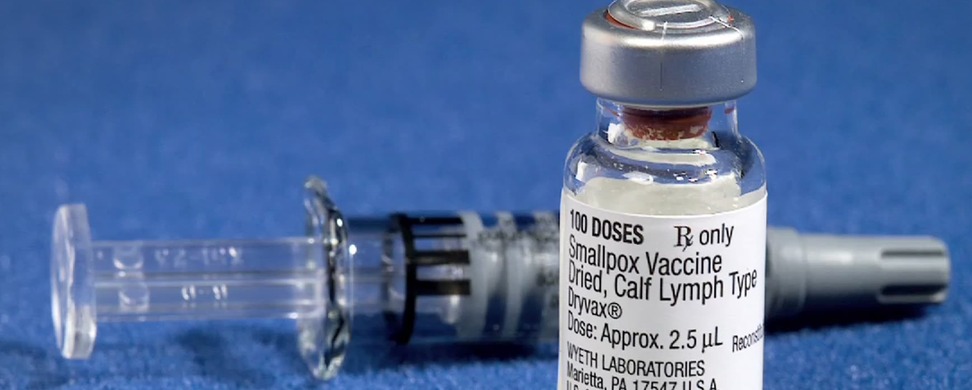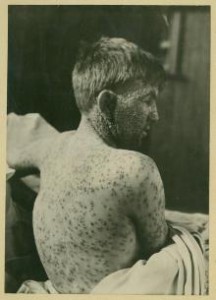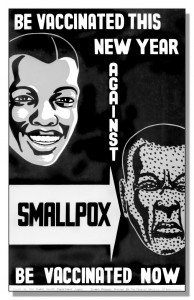by Julie Schopieray, dogged researcher and regular contributor to Grand Traverse Journal
Recently the Traverse Area Historical Society received an email from a woman in Kalamazoo who, while visiting Traverse City, had purchased a “Boys Diary” at a local antique shop. After reading it herself, she wanted to donate the book to the History Center, only wanting in return any information on who the author of the diary might be, and what happened to him. We accepted her donation and I had her send the book to me. I was excited about the challenge of identifying the author.
The day it arrived I began to look for clues that might lead to who the young man was. There were no last names mentioned, only first names, and the parents were only identified as Mama and Dad. Starting at the first page, I jotted down every name mentioned. By the time I got to the March entries, I felt I had enough clues to take the names and compare them to the 1919 city directory. I entered only first names into the database and they all seemed to match well with one particular family. That along with a very important clue about a box of candy, I came to the conclusion that this diary belonged to someone connected with the Straub Brothers & Amiotte Candy Company. “The factory” was mentioned many times in the diary and when “a box of candy” was used in the same sentence, I knew I was on to something.
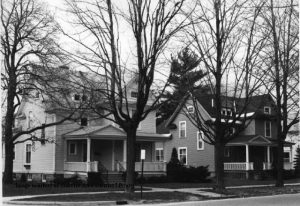
Next, I figured a birth year of the young man, taking the year (1919) and the fact that he was a freshman in high school and age 15, so assumed his birth year was 1903. When I looked at the Straub families listed in the 1920 census, I saw one who had a son, Robert, who was born around 1903. As I looked further in the database, I found a passport application for a Robert C. Straub, which listed his exact birth date– June 12, 1903. A-ha! I immediately flipped to the June 12 diary entry and saw he had written about all his birthday gifts. I had a perfect match! I was then able to connect all the first names mentioned to family members. Robert was the youngest of three children of Anton and Molly Straub. He was 8 years younger than his next sibling, Anton jr. “Tony”, and 11 years younger than his sister Helen. The Anton F. Straub family home was at 536 W. 8th st. Their house is a twin to the home of Anton Straub’s brother John, who lived next door.
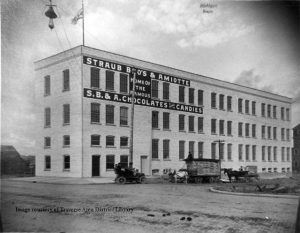
When Robert Straub received the diary on his 15th birthday in 1918, the first World War was still raging in Europe though there were some signs of peace. Many of the city’s young men were off serving in the armed forces and citizens purchased Liberty Bonds to support the cause. The influenza pandemic was affecting the entire country, and the local economy witnessed its first real hit the year before when the Oval Wood Dish Company, one of the town’s largest employers, packed up and moved out of town. The local labor movement made news due to complaints of low wages paid to the girls who toiled long hours in cigar and other factories. The Straub Brothers & Amiotte Candy Company factory on the corner of Front and Hall streets, was producing candy, marshmallows, and other confectionery delights at a high rate, but at very low pay to the mostly young women who staffed the factory. One account stated the owners had claimed that the factory could “get all the girls they wanted for $4 per week” when a living wage needed for the time was better than $15 a week. However, for the owners of the candy company, life was good.
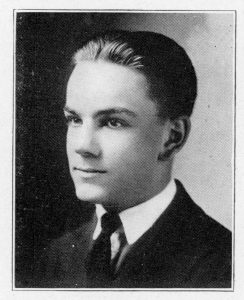
Robert Carl Straub, the youngest child of Anton and Molly Straub, faithfully wrote in his diary nearly every day for the year 1919. The following excerpts are a condensed version of the diary. It had been given to him on his fifteenth birthday in June 1918, from his cousin Irene and it starts the first of the following year. His handwriting is neat and easy to read. The life he describes tells the reader that he comes from a fairly well-off family. He is responsible, doing his daily chores and attending to his studies. He works on the school paper, plays basketball, participates on the debate team and does well in school, but as a young teen always seems to have time and money to spend on movies and fun with his friends. He loves ice cream and mentions it often. He even works on and drives the family auto around town, taking the family on errands and friends “out for a drive”. (14-year-olds could get a learner’s permit in Michigan in 1919. It was raised to 16 in 1937) The spelling is Robert’s. Notes in brackets are added by me to identify people and places mentioned.
January 1–Diary for the year 1919. Shoveled off walk in the morning… I find this is a pretty big page to fill with one days happenings. Got in bed at 15 minutes to two. Reason: went on a sleigh ride and had a11 o’clock supper at the church. Went to Wahl’s [a confectionery & ice cream store in the Lyric Theater building on Front St.] for first time in 1919. Also first sundaes.
More snow. Shoveled off walks. Fixed fire all day long. Went downtown in the afternoon and bought two records and a bottle of ink. Total bill $2.45. Also went to factory. Played Dad solitary in the evening and came out one to the good.
More of that junk you call snow, also more walks to shovel after I got up at 9:30. Went downtown in the afternoon and also went to the factory. Went to the show in the evening and saw George Walsh in “On the Jump”. He was mostly on the jump. Thus, another perfect day was ended when I began snoring.
School was to start today but it was posponed on account of the “flu”. That is hard luck in one way and good luck in another way.
Went downtown twice in the morning and once at night. Exchanged Kate’s wedding present and also took it to the house. Went skiing in the afternoon at the Golf Grounds. Got home wet and tired but all there. Had three dishes of Ice Cream today. Only bought one myself. Kate Wilhelm & Frank Turner were married. I had some bride’s cake and groom’s cake. Picture shows closed. Bowling allies closed. Some DEAD town. Darn the “flu.” Wahl’s open. Some lively place.
Went to the Commission Meeting after supper. Began at 8 p.m. and it let out at 10 p.m. Some time there. The whole commission better study up on parliamentary rule! Spent 25¢ for Ice Cream.
Fixed the fire and shoveled a little snow. I got a gallon of cider from Morgan’s. Went to the factory. Went downtown and spent 10¢ for a dish of Ice Cream. After supper Dad and I played solitary and I came out to the bad. Dad won ten games and I won six. Revenge is sweet… Some swell day. Sun was out and it (weather) was very warm for winter.
Joy! Joy! Joy! no snow to shovel. Dusted the dining room. Afternoon: Took a treatment from Miss Swan. [Sisters Lottie and Ella Swan ran a chiropractic office from their home at 247 Washington st.] Went downtown in the evening and walked up and down the street with Levi. Spent 25¢
…Put another coat of paint on our Bobs [bob sleds]. Then Levi and I went downtown. Had dinner and then we went skiing. No good. Very good sliding as we borrowed a couple of sleds and went sliding… After supper we put another coat of paint on the bobs and then five of us went sliding in the moon light. Great sport!…
Got up early and went over and got some “Liberty” Kraut. [during WW1 it was common for German-sounding foods to be renamed. Sauerkraut became “Liberty” kraut, etc.] Uncle Johns‘ were over for dinner. Mama took a treatment… We had the Edison fixed.
…wrote a letter to Helen. Made a aeroplane with my model builder…
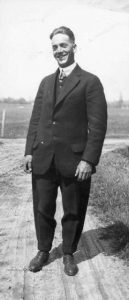
…Monday, no school… After dinner went downtown and had my hair cut, drew $1 out of the bank, payed Hamilton and Steinbergs. Bought Tony a pair of socks for his birthday. We all went over to Tony’s for his birthday supper…
Went to school all day. Aunt Lena came over for dinner and super and stayed all night. After school I wrote my last book review. Studied after supper… but could not sleep as they were playing the Edison all night long. A.A. meeting after school to disband all winter athletics. This semester will end February 15. No spring vacation and one extra week in June [all due to the flu outbreak].
After dinner, I took a treatment from Miss Swan. Then I took a letter to Uncle Mike and a package to the Red Cross Rooms. Then went downtown and to the factory. After supper, I shined Dad’s shoes and went to the dentist. Then I bought a pair of stockings and went to the show. Saw Tom Mix in “Fame and Fortune”.
Sunday morning went to Sunday School…After supper, I shaved my upper lip and went over to Irene’s.
Monday, went to school all day. After supper I played basketball at the church till 9:30 p.m. I handed the names of the scouts of Troop 1 to Geo. H. Curtis at noon.
Had a Algebra test and got my Physiology paper. Got 92. After school I came home and popped some corn and then studied until supper time. After supper I went to the Athenian Meeting. [debate team]
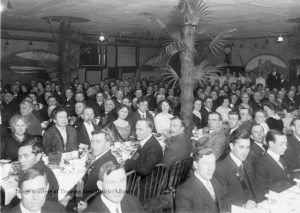
Went downtown after school and paid H. & L. Co. and Johnson Grocery bills. Went to the factory and came home with Dad at 5 p.m. Unusual event. [his father worked long hours and often evenings] …went to the Chamber of Commerce supper at the C.S. P. S. hall. Mama got a postal from Karl Umlor written in Germany.
Got to school before light and wrote my algebra test from 8 to 10 a.m. After 10 went to the factory and got a check and a box of candy which I took up to Dr. Martin. Had physiology final from 1-3…then went downtown and sent a Valentine to Helen and Grandma.
…Shoveled off the walk and carried out the ashes…went to the factory and got a box of candy and came home with Dad. Betty Gordon’s birthday…I gave her a box of candy. Walt Thompson and I went to the show at night and saw Arbuckle in “Camping Out”.
First day of school new semester. 1st hr. Mec. Drawing–Connell. 2nd hr. Geometry–Petertyl. 4th hr. Botany–Anderson. 6th hr. Caesar- Gordon. 7th hr. English–Eddy.
School all day. Played basket-ball after school at the Cong. Gym. “Red” Higgins is our coach.
Gave a book review. Went to the factory. Went to the basket-ball game after supper Results- Freshie 29, Sophomores 14. Went to Wahl’s after game. Spent 5¢. Won 10¢ on the game.
Mama’s birthday. Bought her a fern. Went to Athenian meeting after supper.
After school got a book at the library then came home and studied. Had Athenian picture taken at noon at Smith and Price.
Bought Irene a address book for her birthday…Night school after supper. Debate after night school. T.C. & Petoskey on “Minimum Wage” TC 0, Petoskey-3.
Went with Uncle John. He took his car out. Went downtown… put 3¢ in a slot machine & got out 15¢ at Wahl’s.
Did not go to S. S. [Sunday School] but helped work on the car. Got it all ready to take out. Went out riding with Uncle John, Tony, Evelyn & I. Shaved my upper lip.
Helped put paper together after school [school paper]. Went to freshman game…went to Grand Opera after game.
Went to factory & to West Side Bakery. Took a treatment.
Sunday [March 30] All clocks set ahead one hour. [Daylight Savings Time had started one year earlier]
Went downtown with the car…Athenian after supper. On debate- “Universal Language should be adopted” Negative 3 to 0. We won.
Had picture taken at Smith & Price after school. Dad & Ma went to Liberty Loan Mass Meeting at Opera House.
Got my picture proofs. Rotten!!! Sat over again for three more pictures. Dad took everybody to the show.
Went to S.S. Dad, Mama & I went to McCool’s Restaurant for dinner. Took Aunt Lote’s for a ride in the afternoon. Had ice cream for supper… after supper…had more ice cream.
Scout meeting after supper at Boardman. Julius Hanslowski is our scout-master.
Got my pictures. $6 a dozen. Harsch & I went out in the Asylum Wood for flowers after dinner.
Started on my eighth plate in Mech. Drawing. Harsch & I distributed Liberty Loan posters after school…
Went to school and gave Andy our flowers for botany. Everybody helped clean out the garage.
May 2- Got up at 4:45 a.m. and went fishing…at Asylum Creek. Got one trout.
May 10- Karl Umlor arrived in the city at 6:15 p.m and makes a swell officer.
Dad, Tony, Harsch and I went fishing to the Platte. Results: Dad-1, Tony-3, Harsch-0, Myself-1 (I caught the biggest fish of the bunch)
Got interest from my Liberty Bonds and put $2 in the bank.
[May 30] Memorial Day. Put flowers on soldiers grave…then came home for Dad & Mama and heard the ceremony at the cemetery. Marched in the parade…then went to T.C. vs. Boyne City basketball game.
Went to the club house after school. [Wequetong Club on the bay] bolled 97. Spent 35¢.
Had dinner at the Whiting….Took the folks to church at night and went riding with Uncle John. Had a puncture.[tire]
Athenian meeting was held at Dr. Houston’s house on the peninsula. I was elected president for the next semester.
June 12 [Robert’s 16th birthday– this is what a 16-year-old scout got as gifts in 1919!] Diary from Irene; a first aid kit from Helen; a sewing kit from Mrs. Kernan; $5 from Dad with which I bought a $3 pair of tennis shoes; a blanket from Mama and a canteen from Mike. Got 89 on Science final… 90 on English final… 95 on Algebra… Went to doctor and prepared for camp.
Botany final.. then finished my Mech. Drawing. Got 97 on my Geom. test. Caesar final…got 96%…school out at noon. Bought $8 camera …at Scott’s Drug Store.
Had a very good dinner at the Whiting Hotel. Took Dad to the ball-game after dinner then went riding. Had to change a tire and inner tube. Took Mama to church then went to the club.
[July 3] Went swimming at Aunt Alice’s cottage at East bay.
Went to the club house (Dad, Mama & I). Beat Dad 2 games of pool and went 50-50 at bowling.
[He Took a trip to visit his sister Helen’s in Chicago between July 8- Aug. 3]
Aug. 12. Went to see the circus unload…Saw the circus parade. Went to the show grounds & to the side show. Evening, took Mama, Aunt Lote & Virginia to the circus. Dad & I went to the show.
Aug. 20. Wreck on the P.M. R.R. near the poor house. We went out. I drove Anderson’s roadster back. Met Dad & went back to the wreck.
Sunday. Went to Hotel Pennington for dinner [In Interlochen]. Took Mama over to Tony’s & then went to the club. Spent 23¢.
Went to the club & to the factory. Went to Amiotte’s for supper. Stayed until 10:30 p.m.
Went to the Little Tavern for dinner then to Tony’s. Went to the club until 4 p.m.
Sept. 8 School all day. Went to the club after supper. Was elected president of the sophomore class!
Dad & Mama went to the Golf Club dinner Dance. I stayed home.
School all day… football game after school. Athenian after supper. Then went to the club but as no one was there, I came home.
The sophomore class was going to have a beach party at East Bay but as it rained, the party had to be held at Boardman school.
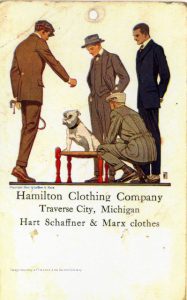
Bought a new suit with long pants at Hamilton’s. Some price! $45. Did some shopping.
Was going to take Mama and some ladies to the fair after school, but the car wouldn’t go…bolt on the battery was loose. Went to the fair after supper. [he went to the fair the next three evenings after school]
School all day. Received a wire that Grandma had another stroke. Ran errands after school. Went to court after supper Trace got fined for shooting a bird.
[Oct 10] School all day. Had dinner at school. Dad had two of his fingers cut off in the morning. I got excused from school early. Stay home at night. Evelyn came over and kept house for us.
Washed the dishes. Mr. Musselman came over to see Dad. Charley shaved Dad and the Dr. also came to fix his hands.
Put air and dis. water in the car. Went to the bank. Went to Dr.s with Dad after dinner.
School all day. Took Dad to the barber shop. Went over to Musselman’s after supper. Eleanor showed me how to dance.
Oct. 26 Turned the clocks back an hour…The Dr. came. Went to Aunt Lotes for supper. She had a faint and a gas attack.
School all day. Basketball after supper. Sophs 30, Faculty 28.
Went to S. S. Hung around Wahl’s all afternoon.
School in the morning. Out of school for armistice day in the afternoon.

Went to Manistee to see the football game. Went with Ted Johnson. Had two punctures.
No school. Went to the bank. Got $4.24 interest on Liberty Bonds. Went downtown & to the garage [had a flywheel put in the day before].
Thurs. Nov. 27 Thanksgiving. Tony’s & Uncle Max here for dinner. Played basket ball at night. Packed for my trip to Flint.
School till 7th hr. Then went to the M.E. church to decorate for banquet. Went to the football banquet. Got my saxophone.
Shoveled off the walks. Studied quite a bit. Went downtown in the afternoon… got 2 collars & a pair of mitts. Sent for 2 instruction books for my saxophone. Spent $2.04.
Fixed the fire. Tony came over and we blowed on the saxophone and then went downtown.
School all day. Downtown after school Show after supper. Had a bad storm. Spent 50¢.
Shoveled the walks. School all day. Gave my report. Athenian after supper.
Went to the dentist at 10 a.m. After dinner took the car to Petertyl’s to get it painted. Went to the bank for my Victory Bond and my Xmas saving club money. Went over to Boardman. Bowled 101 and 133.
School all day. Played my saxophone. The instruction book for it came today. Cold out. 10 below zero at 8 o’clock.
Went to the dentist. Bought all my Xmas presents. took my saxophone back to get it repadded. Got $2.71 interest on my Liberty Bond. Bowled 118, 120. Show after supper. Spent all together $16.50. Bought me a chemical outfit and a collar.
Thurs. Dec. 25. Christmas. Stayed around the house a while then we all went over to Kaufmans. Dinner at 2:30. then we took Mike to the train. Got a Saxopohne from Dad Sweater, gold cuff links, sheave holders from Mama. A knife from Helen & Mike, Two pair of socks from Tony & Evelyn, writing paper from Aunt Lote & Uncle Mike, a tie from Mrs. Kernen.
Went to… Giddings and played pool. Shoveled off the walks. Played basket ball at the Cong. all afternoon.
Had a early dinner and then went to the train with Helen. Went to the bank and downtown with Dad. Got $7.84 interest. Bowled 114, 135. Went to the Elks for supper and to their dinner dance and then went to the midnight show at the Lyric. Spent 31¢.
[Dec. 30, 1919] Thus this diary comes to a close after one successful year of keeping.
More research was conducted and I found out what this young man did after 1919. The summer following his high school graduation he went on a trip to Europe then attended the University of Michigan, graduating in 1926. He then moved to Chicago and started a business, the Robert Straub & Co., a sales promotion company. He married in the early 1930s, living and working in Chicago until 1972 when he and his wife moved back to Traverse City to retire. Robert died in 1998 and his wife in 2005. They had no children.
Julie Schopieray is a regular contributor to Grand Traverse Journal.

